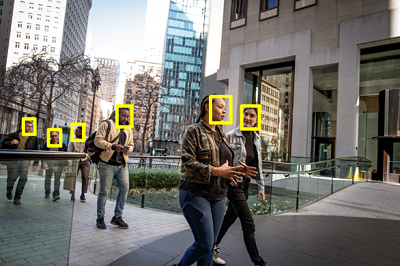Artificial intelligence enables the creation of effective solutions to many types of problems.
Artificial intelligence applications can exhibit human characteristics to analyze the world around them, make predictions or inferences, and act accordingly in ways unimaginably similar to humans.
But with this power comes responsibility. As a developer of artificial intelligence solutions, you must apply principles that ensure that all users benefit from artificial intelligence, without excluding any individual or sector of society.
What is artificial intelligence?
Simply put, artificial intelligence is the creation of software that mimics human behaviors and capabilities. Key elements include the following:
- Machine learning: this is often the basis of an AI system and is the way to “teach” a computer model to make predictions and draw conclusions from data such as classifying variables.
- Anomaly detection: the ability to automatically detect errors or unusual activity in a system.
- Computer vision: the ability of software to interpret the world visually through cameras, videos and images.
- Natural language processing: the ability of a computer to interpret written or spoken language and respond.
- Conversational AI: the ability of a software “agent” to engage in conversation.
>> All these resources, in addition to speeding up the work, also help to discoverwhat is innovation?

How machine learning works
Some of the most widely used examples of artificial intelligence include technology such as:
Machine learning is the basis of most artificial intelligence solutions.
So how do machines learn?
The answer is: from the data. In today’s world, huge volumes of data are created in the course of everyday life. Massive amounts of information are generated from text messages, emails and social media posts to which photos and videos taken on phones are sent. Millions of sensors create even more data in homes, cars, cities, public transportation infrastructure and factories.
Data scientists can use all that data to train Machine Learning models that can make predictions and inferences based on the relationships they find in the data.
Solve questions such as: Grow more and with less waste?
Description of anomaly detection
Imagine creating a software system to monitor credit card transactions and detect unusual usage patterns that could indicate fraud. Or, an application that tracks activity on an automated production line and identifies errors. Or, a race car telemetry system that uses sensors to proactively warn engineers of potential mechanical errors before they occur.
These types of scenarios can be solved using anomaly detection, a machine learning-based technique that analyzes data over time and identifies unusual changes.
Now it will be seen how anomaly detection could help in the race car scenario.
- The car’s sensors collect telemetry data such as engine rpm, brake temperature, etc.
- An anomaly detection model is trained to understand the expected fluctuations in telemetry measurements over time.
- If a measurement occurs outside the expected normal range, the model reports an anomaly, which can be used to alert the race engineer, who will call the driver to make a stop and fix the problem before he has to abandon the race.
Description of the computer vision
Computer vision is an area of artificial intelligence that deals with visual processing. Some of the possibilities it offers will now be explored.
Some specific uses:

Object detection

Image classification

Image analysis

Face detection

Text detection and OCR
Description of natural language processing
Natural language processing (NLP) is the area of artificial intelligence that deals with creating software capable of understanding written and spoken language.
NLP allows you to create software that can do the following:
- Analyze and interpret text in documents, e-mail messages and other sources which are generally managed by a document manager.
- Interpret spoken language and synthesize speech responses.
- Automatically translate spoken or written sentences between languages.
- Interpret commands and determine appropriate actions.
Conversation AI Description
Conversational artificial intelligence is the term used to describe solutions in which artificial intelligence agents engage in conversations with humans. Typically, conversational AI solutions use bots to control dialogues with users. These dialogues can take place through website interfaces, email, social media platforms, messaging systems, phone calls and other channels.
Bots can be the basis of artificial intelligence solutions for:
- Technical support of products or services for customers.
- Reservation systems for restaurants, airlines, movie theaters and other appointment-based businesses.
- Health care consultations and self-diagnosis.
- Home automation and personal digital assistants.


